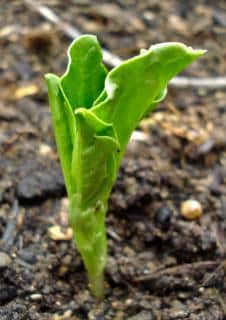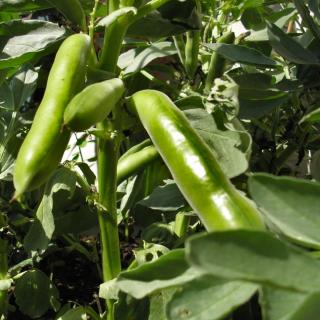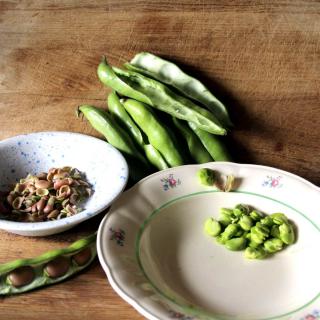

Broad beans are a type of bean and part of the legume family. They’re easy and quick to grow!
Basic Broad bean facts
Name – Vicia faba
Family – legume family
Type – annual
Height – 1 ⅓ to 13 feet (40 to 400 cm)
Exposure – full sun
Soil – light, not too moist
Harvest – Around 3 months after sowing
Their slight taste of hazelnut and the ease with which they can be cooked and prepared or even eaten raw make them a favorite.
Broad beans are very easily sown, from February to April in most temperate climates, and even a bit earlier, from October to December for mild winter, coastal, and Mediterranean climates.
 Sowing season and harvest season
Sowing season and harvest seasonPlaces with cold winters
Mild-wintered regions
Take care: broad beans hate heat and drought which slow pod growth. This is why broad beans are planted early.
Row spacing
If you wish to plant several rows of broad beans, space them around 8 inches (20 cm) apart.
It is important to keep the soil soft and weed-free by running a hoe along on a regular basis.
Mulch helps reduce weed growth and spaces watering, too.
When plants are around 6 to 8 inches (15 to 20 cm) tall, ridge their base by about 1¼ to 1½ inches (3 to 4 cm) to anchor it and favor root development.
Starting in May, usually when broad beans or flowers start forming, pinch tips of stems above the 5th or 6th pair of leaves.
For taller varieties and if your garden is prone to strong winds, stake your broad beans so that they don’t collapse with a gust of wind.
Harvesting broad beans takes place around 3 months after sowing.
This time span may vary depending on climate, soil quality and watering.
How can you know when to harvest broad beans, so that they are neither too ripe nor too young?
Several clues make this a sure practice:

They can also keep in the refrigerator, but only for a few days.
Broad beans can keep for many months if they have been well dried.
Even though they are easy to grow and care for, it is important to watch over your broad beans for their main enemy: black aphids.
They can be seen attacking stems, and even pods, forming colonies of small black insects that compromise broad bean harvests.
Watch for possible fungus attacks as well, such as downy mildew or rust on broad beans.
Broad beans love growing near artichoke, dill, aniseed and lettuce.
Broad beans hate growing near garlic, red beet, shallot and onion.
Here is a short selection of broad bean varieties, which are interesting for their cultivation, productivity or taste.

With high sugar and mineral content, such as magnesium, potassium or calcium, and many vitamins, too, broad beans have a positive impact on digestive functions and to curb exhaustion.
They are also recommended for persons with diabetes, since the carbohydrates they contain don’t change blood sugar levels.
Don’t grow broad beans in the same plot 2 years in a row; better to wait even 4 years before sowing again in the same place.